Best Uses of Wood Chips 2025
- December 20, 2023
- 0 comment
In the ever-evolving realm of gardening and landscaping, the role of wood chips has taken center stage, offering a myriad of possibilities for enthusiasts and professionals alike in 2025. As we delve into the best uses of wood chips, this year unfolds a tapestry of innovative applications, transforming seemingly ordinary garden waste into valuable resources. Beyond the conventional role of a wood chipper in waste reduction, these versatile chips find themselves enhancing soil fertility, creating sustainable mulch for diverse plant species, and even serving as a canvas for new growing areas. In this exploration of the best uses of wood chips, we uncover the evolving landscape of gardening practices, where these humble chips emerge as a cornerstone for eco-friendly pathways, playground surfaces, and habitats for wildlife. Join us on a journey through the burgeoning possibilities as we unlock the full potential of wood chips in 2025.
List of Best Uses of Wood Chips
- Efficient Mulching
- Sustainable Composting
- Simple Growing Areas
- Practical Biochar Production
- Versatile Pathways
- Playground Safety
- Wildlife-Friendly Habitats
- Mushroom Growth Medium
- Soil Erosion Prevention
- Natural Ground Cover in Recreational Areas
What You Need To Know About Wood Chips
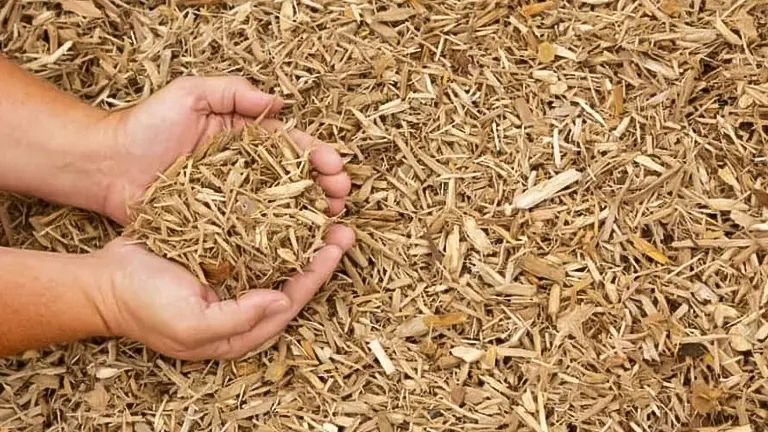
A wood chip is a small, thin piece of wood that is typically produced through the mechanical process of chipping or shredding larger wood pieces. These chips vary in size and shape, often resembling small, flat rectangles. Derived from various wood sources, including branches, logs, or even discarded wood from manufacturing processes, wood chips hold immense utility in a range of applications. Widely recognized for their role in landscaping and gardening, wood chips serve as a versatile material, offering benefits such as moisture retention, weed suppression, and temperature regulation when used as mulch. Beyond landscaping, wood chips find applications in diverse sectors, including biochar production, composting, and even as a substrate for growing mushrooms. With their eco-friendly characteristics and adaptability, wood chips play a pivotal role in sustainable practices across different industries, contributing to the repurposing of wood waste into valuable resources.
Best Uses of Wood Chips
As we navigate the gardening terrain of 2025, wood chips stand out as reliable and practical allies, offering a range of applications that go beyond mere aesthetics. Let’s delve into the top uses of wood chips, exploring how they can redefine our approach to gardening and landscaping this year.
1. Efficient Mulching
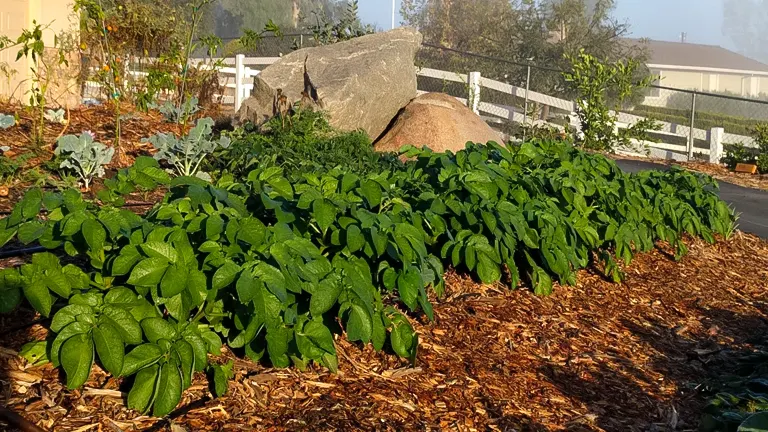
Wood chips prove to be an efficient solution for mulching, effectively regulating soil temperature, retaining moisture, and preventing weed growth. Their practical application establishes them as a preferred choice for gardeners prioritizing both functionality and a tidy appearance. The efficiency of wood chips in mulching lies in their ability to create an optimal environment for plant growth, promoting health and vigor. This multifaceted approach to soil management makes wood chips an enduring and practical option for gardeners seeking to enhance the overall health and aesthetics of their landscapes.
2. Sustainable Composting
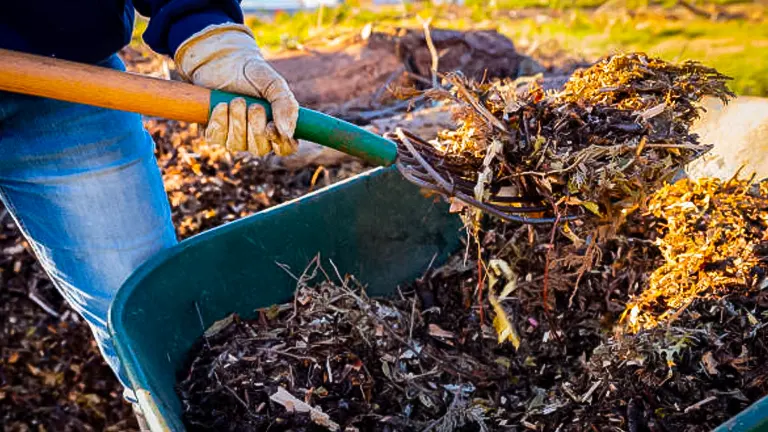
Within the realm of composting, wood chips undergo decomposition to yield nutrient-rich compost, presenting a sustainable method for improving soil fertility. Gardeners with a commitment to eco-friendly soil enrichment regard wood chips as a simple and pragmatic supplement to their composting routine. The sustainability of using wood chips in composting lies in their ability to contribute essential nutrients to the soil while aligning with environmentally conscious gardening practices. This eco-friendly approach positions wood chips as a reliable and responsible choice for those seeking to enhance the health and vitality of their soil.
3. Simple Growing Areas
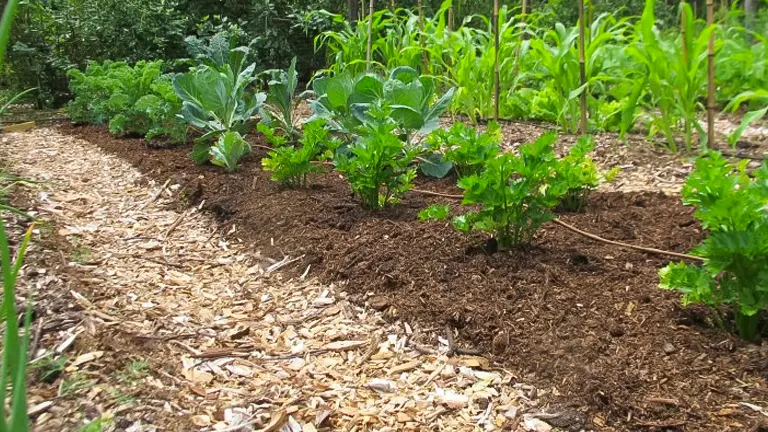
Using the no-dig method with wood chips simplifies creating new growing spaces. Layering these chips with nitrogen-rich materials provides a simple yet effective way to cultivate vibrant plants in raised beds. The ease of creating growing areas with wood chips is due to their user-friendly nature and compatibility with various gardening techniques. This straightforward method aligns with the preference for simplicity among gardeners, offering an accessible and efficient means to cultivate thriving plants in raised beds. Wood chips, aiding in creating simple growing areas, become a practical choice, enhancing the accessibility and success of cultivating lush and productive garden beds.
4. Practical Biochar Production
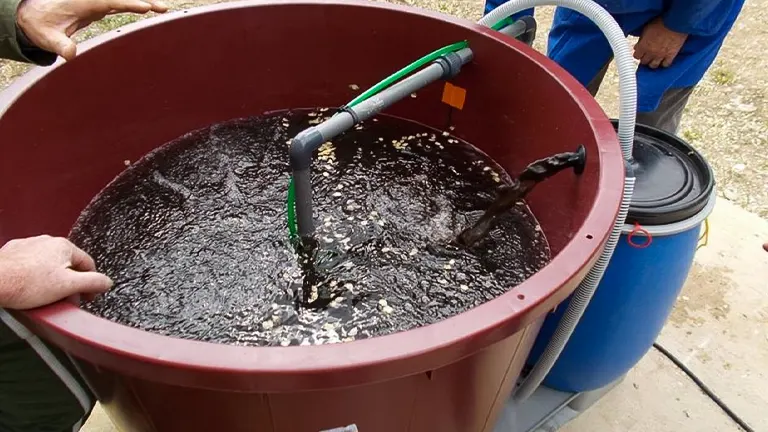
Soaking wood chips in nutrient-rich compost tea offers a practical way to produce biochar. This enhanced charcoal becomes a valuable tool for addressing soil challenges and improving soil structure. The practicality of biochar production from wood chips lies in its dual role improving soil health while serving as an effective solution for various soil-related issues. This straightforward approach positions wood chips as a practical and versatile choice for those aiming to address soil concerns and promote sustainable gardening practices.
5. Versatile Pathways
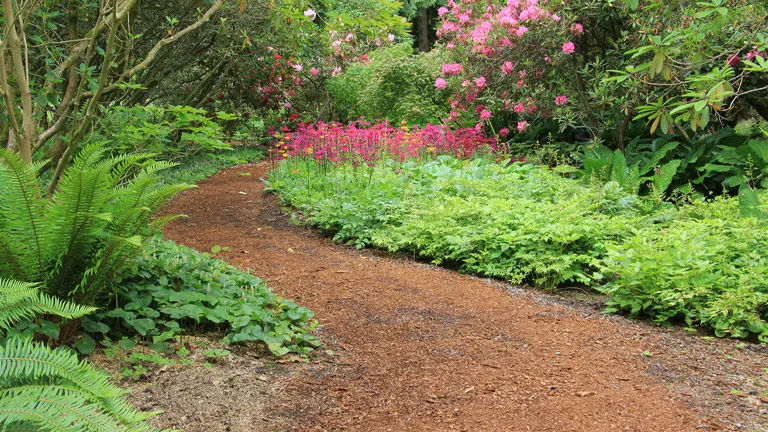
Wood chips are versatile for creating pathways that are both durable and visually appealing. Whether you go for larger chips for long-lasting paths or smaller ones for garden bed touch-ups, wood chips are a flexible choice for eco-friendly walkways. Their versatility comes from meeting various preferences and functional needs, making them a practical option for those wanting durability and visual appeal in their garden paths. This adaptability makes wood chips a reliable choice for creating walkways that improve the overall look and functionality of outdoor spaces.
6. Playground Safety

Wood chips are a great choice for playground ground cover, ensuring safety for kids. They’re practical, with flexibility and minimal maintenance requirements, creating a safe and secure play environment. Wood chips excel in safety by offering a cushioning effect, reducing impact during falls and providing a protective surface for children’s activities. This practical and safety-focused approach establishes wood chips as a reliable and preferred option for those prioritizing children’s well-being in recreational spaces.
7. Wildlife-Friendly Habitats
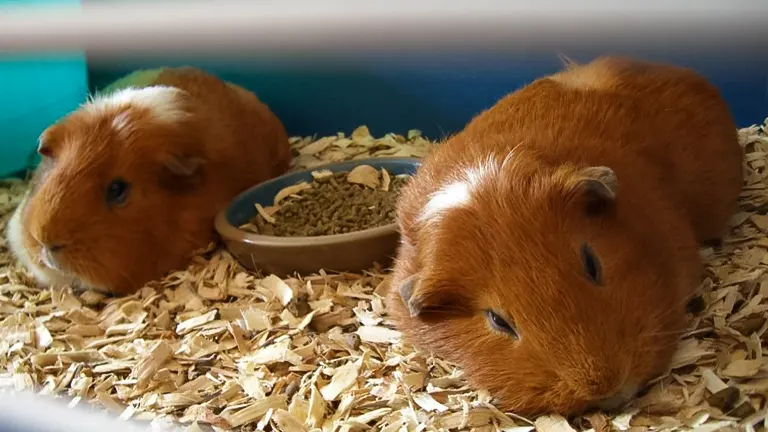
Wood chips, particularly in the form of wood shavings, serve as excellent beddings for cages. The soft and absorbent nature of wood shavings provides a comfortable and cozy environment for pets to nest and burrow. It mimics their natural habitat and offers insulation against temperature changes. Additionally, wood shavings are known for their absorbency, helping to manage moisture and odors in the cage. It’s essential to choose untreated wood shavings to ensure the safety of the pets. This practical application of wood chips enhances the well-being of pets in captivity by creating a suitable and naturalistic living space.
8. Mushroom Growth Medium
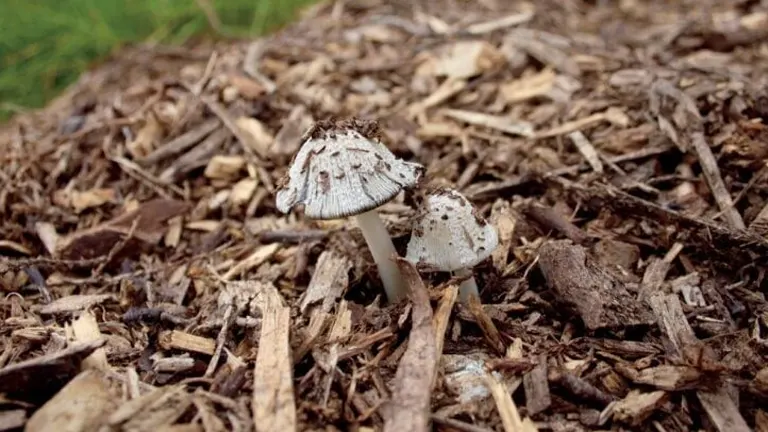
Wood chips demonstrate their adaptability as a medium for cultivating mushrooms, extending their application into the realm of sustainable homegrown produce. Particularly in shaded areas, they prove to be a practical substrate for growing mushrooms. The versatility of wood chips in supporting mushroom growth underscores their role in sustainable and DIY cultivation, offering an accessible option for those interested in producing their own mushrooms at home. This mushroom-friendly feature positions wood chips as a reliable and convenient choice for home gardeners looking to explore sustainable and self-sufficient practices.
9. Soil Erosion Prevention
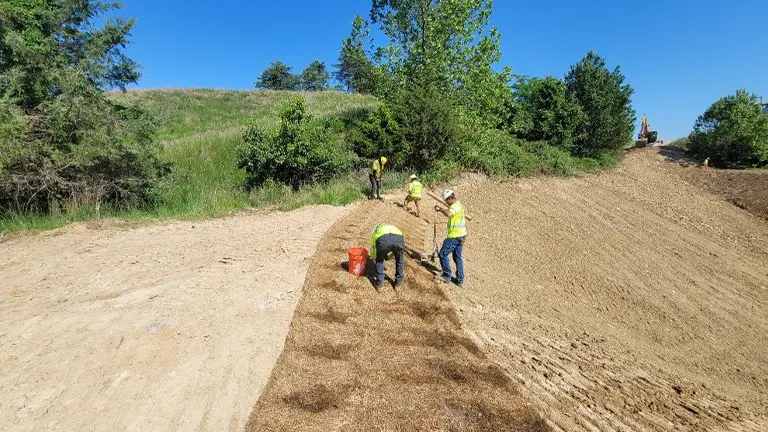
Wood chips help prevent soil erosion by acting as a temporary barrier, stabilizing the soil during heavy rain and wind. This practical application makes them a valuable tool, especially in landscaping projects prioritizing soil protection. Wood chips prove effective in mitigating soil erosion, emphasizing their practicality in offering a temporary solution to safeguard the soil. This makes them a valuable asset for landscapers and gardeners facing erosion challenges, positioning wood chips as a reliable and convenient option for addressing and managing soil erosion concerns in various outdoor projects.
10. Natural Ground Cover in Recreational Areas
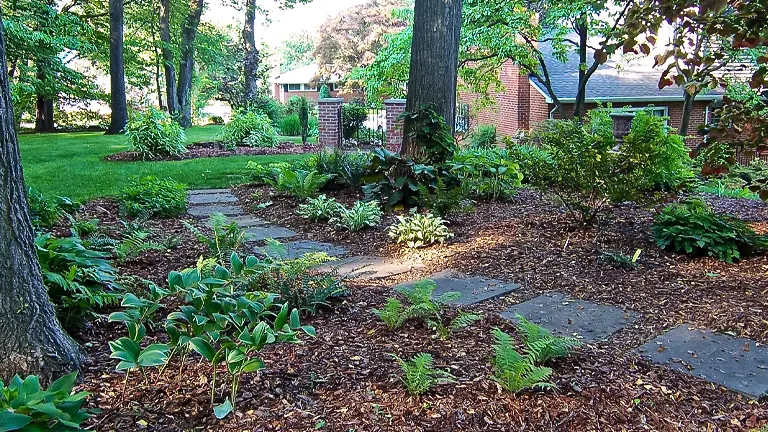
Are you in search of a natural ground cover option for recreational areas? Wood chips present an eco-friendly choice that not only offers practical advantages but also brings a touch of nature to areas usually dominated by hard-paved surfaces. Choosing for wood chips as a ground cover reflects the increasing preference for sustainable and nature-inspired solutions in outdoor recreational spaces. This environmentally conscious aspect positions wood chips as a practical and visually appealing option for individuals aiming to establish more natural and eco-friendly environments in recreational areas.
Factors to Consider When Using Wood Chips
- Wood Chip Size: The size of the wood chips matters, depending on the intended use. Larger chips may be suitable for pathways and ground cover, while smaller chips are ideal for mulching and composting. Consider the application and choose the appropriate chip size.
- Wood Type: Different wood types have varying properties. Hardwoods, like oak and maple, decompose more slowly than softwoods, such as pine. Consider the wood type based on your desired decomposition rate and nutrient release.
- Freshness of Wood: Freshly chipped wood may undergo a decomposition process that temporarily ties up soil nitrogen. If using wood chips around nitrogen-sensitive plants, consider aging or composting the wood chips first to minimize nitrogen depletion.
- Mulching Depth: The depth of wood chip mulch plays a role in its effectiveness. Too thin a layer may not provide sufficient weed suppression or moisture retention, while excessive depth can lead to nitrogen competition in the soil. Find the right balance for your specific needs.
- Application Timing: Timing matters when applying wood chips. For mulching, apply wood chips when the soil is moist to enhance water retention. Consider applying wood chips in the fall to allow decomposition over the winter for spring planting.
- Composting Techniques: When using wood chips in composting, consider the carbon-to-nitrogen ratio. Wood chips are considered a “browns” material, so balance them with “greens” like kitchen scraps and grass clippings for effective composting.
- Pathway Maintenance: For pathways, especially in high-traffic areas, choose larger and more durable wood chips. Regular replenishment may be required as smaller chips break down over time.
- Environmental Impact: Be mindful of the environmental impact. Ensure that the wood chips used are sourced sustainably, and consider local regulations for wood chip disposal or recycling.
- Soil Type: The existing soil type should influence your choice of wood chips. Well-draining soils may benefit from wood chips’ moisture retention, while poorly draining soils may require a lighter touch to prevent waterlogging.
- Intended Use: Clearly define the purpose of using wood chips. Whether for mulching, composting, pathways, or other applications, understanding the intended use will guide your choices in terms of chip size, type, and other factors.
By considering these factors, you can make informed decisions when using wood chips in your gardening or landscaping projects, optimizing their benefits while minimizing potential drawbacks.
Final Verdict
In 2025, wood chips stand as a versatile and eco-conscious solution, offering essential benefits in mulching, composting, biochar production, and beyond. From enhancing growing areas to ensuring safety and supporting biodiversity, wood chips prove indispensable. Their utility in pathways, as a growth medium for mushrooms, and in preventing soil erosion showcases their diverse applications. In recreational areas, wood chips redefine ground cover with a sustainable touch. Overall, their adaptability and environmental benefits make wood chips a foundational element in contemporary gardening practices, embodying both functionality and eco-responsibility.
FAQs
- How can wood chips benefit my garden as mulch?
Wood chips act as effective mulch, regulating soil temperature, retaining moisture, and suppressing weeds. Their natural decomposition adds organic matter to the soil. - Are wood chips suitable for vegetable gardens, considering the nitrogen sequestration concern?
While wood chips may reduce nitrogen in the short term, incorporating green vegetation or composting them first mitigates this issue, making them suitable for vegetable gardens. - Can wood chips serve a dual purpose in creating new growing areas?
Absolutely. Employ the no-dig approach, layering wood chips with nitrogen-rich materials to craft new raised beds, simplifying the process of establishing vibrant growing spaces. - How do wood chips contribute to biochar production?
Steeping wood chips in nutrient-rich compost tea results in practical biochar. This enriched charcoal becomes a valuable tool for enhancing soil structure and addressing various soil challenges. - Can wood chips be used for creating eco-friendly pathways in gardens?
Yes, wood chips, whether large for extended longevity or smaller for replenishing garden beds, are versatile for crafting durable and aesthetically pleasing pathways. - Are wood chips safe for playgrounds?
Absolutely. Wood chips, with their flexibility and low maintenance, make an ideal ground cover, providing a safe and secure environment for children at play. - How can wood chips contribute to wildlife-friendly habitats in gardens?
Piling wood chips in wild corners or bug hotels fosters biodiversity, creating havens for various creatures and adding a touch of nature to garden spaces. - Can wood chips play a role in preventing soil erosion?
Yes, wood chips act as a temporary barrier, stabilizing soil during heavy rain and wind, making them a practical tool for preventing soil erosion in landscaping projects.
As the gardening landscape evolves, wood chips in 2025 prove to be the silent champions of sustainability. From mulching to pathways, these unassuming chips redefine outdoor spaces, seamlessly merging functionality with eco-conscious choices. Consider wood chips not just as material but as a sustainable ally in cultivating your vibrant outdoor haven

Benjamin Brooks
Forestry AuthorGreetings! I'm Benjamin Brooks, and my journey over the past 15 years has revolved around the fascinating realms of content creation, expertise in snow clearing, and the intricate world of lumberjacking and landscaping. What began as a simple curiosity about the natural world and heavy machinery has evolved into a passionate profession where my love for crafting words intertwines seamlessly with my lumberjacking and garden skills.


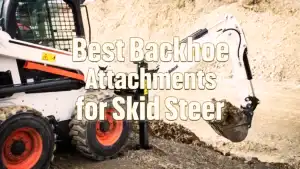

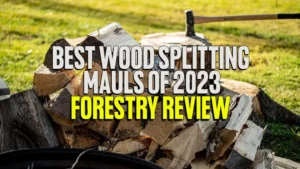








Leave your comment